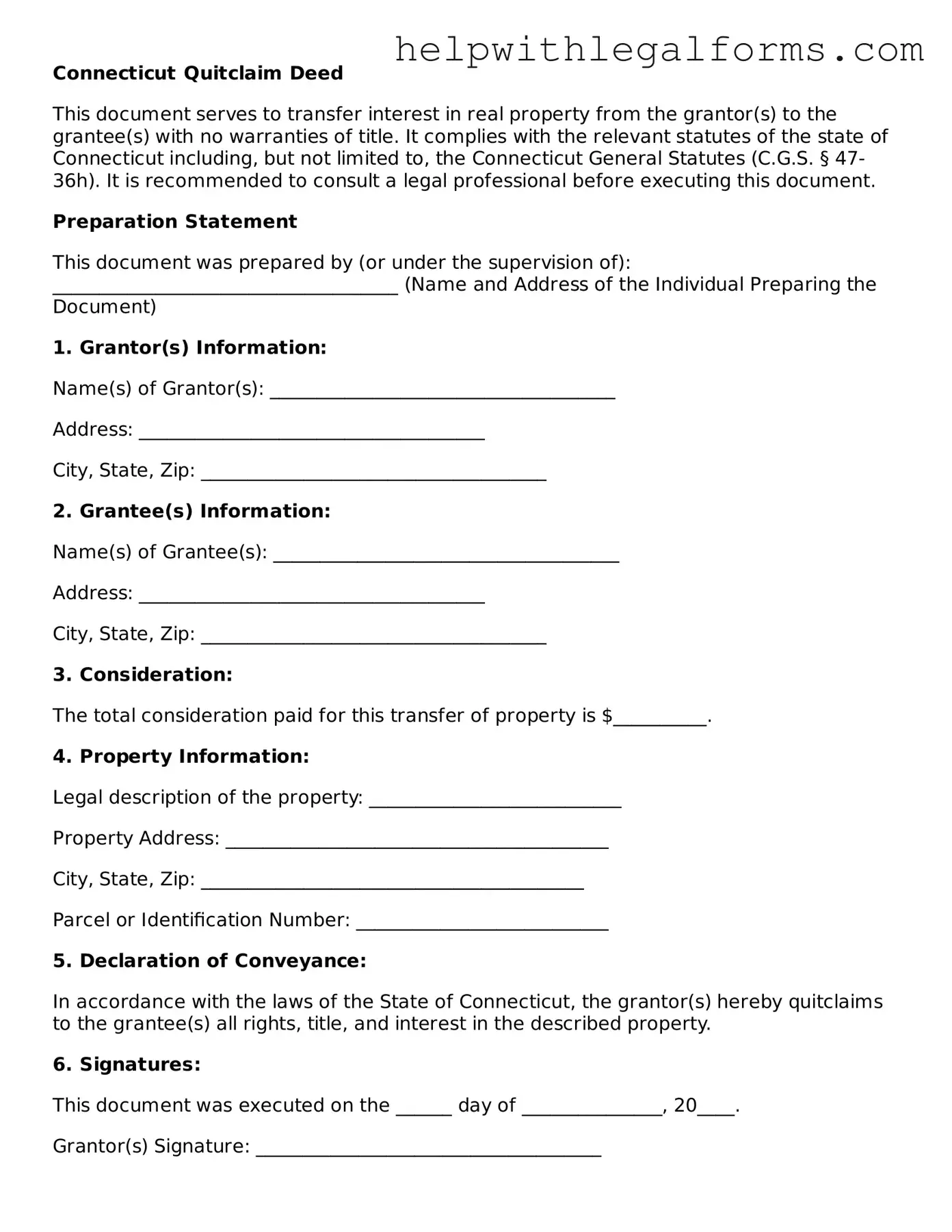Connecticut Quitclaim Deed
This document serves to transfer interest in real property from the grantor(s) to the grantee(s) with no warranties of title. It complies with the relevant statutes of the state of Connecticut including, but not limited to, the Connecticut General Statutes (C.G.S. § 47-36h). It is recommended to consult a legal professional before executing this document.
Preparation Statement
This document was prepared by (or under the supervision of):
_____________________________________
(Name and Address of the Individual Preparing the Document)
1. Grantor(s) Information:
Name(s) of Grantor(s): _____________________________________
Address: _____________________________________
City, State, Zip: _____________________________________
2. Grantee(s) Information:
Name(s) of Grantee(s): _____________________________________
Address: _____________________________________
City, State, Zip: _____________________________________
3. Consideration:
The total consideration paid for this transfer of property is $__________.
4. Property Information:
Legal description of the property: ___________________________
Property Address: _________________________________________
City, State, Zip: _________________________________________
Parcel or Identification Number: ___________________________
5. Declaration of Conveyance:
In accordance with the laws of the State of Connecticut, the grantor(s) hereby quitclaims to the grantee(s) all rights, title, and interest in the described property.
6. Signatures:
This document was executed on the ______ day of _______________, 20____.
Grantor(s) Signature: _____________________________________
Grantee(s) Signature: _____________________________________
7. Acknowledgment:
This section should be completed by a notary public.
State of Connecticut
County of _____________________
On this ____ day of ___________, 20____, before me, the undersigned notary public, personally appeared _____________________________, known to me (or satisfactorily proven) to be the person(s) whose name(s) is/are subscribed to the within instrument, and acknowledged that he/she/they executed the same for the purposes therein contained.
In witness whereof, I hereunto set my hand and official seal.
_____________________________________
Notary Public
My Commission Expires: _______________
8. Recording:
After signing, this document should be filed with the local town clerk's office in the county where the property is located to make it effective.
Important Note: This is a template designed for informational purposes only. Legal advice is recommended to ensure compliance with local laws and regulations, and for any situation requiring legal representation.
